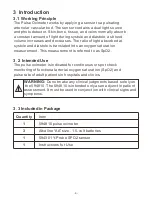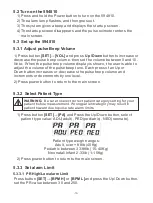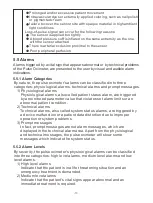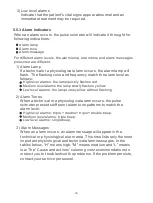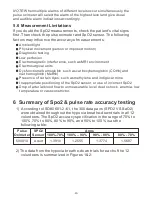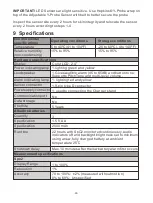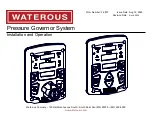
Alarm tone
Alarm message
For different alarm levels, the alarm lamp, alarm tone and alarm messages
presented are different.
1) Alarm Lamp
If a technical or a physiological alarm occurs, the alarm lamp will
flash. The flashing color and frequency match the alarm level as
follows:
High level alarms: the lamp quickly flashes red.
Medium level alarms the lamp slowly flashes yellow.
Low level alarms: the lamp turns yellow without flashing.
2) Alarm Tones
When a technical or a physiological alarm occurs, the pulse
oximeter presents different alarm tone patterns to match the
alarm level:
High level alarms: double beep.
Medium level alarms: triple beep.
Low level alarms: single beep.
3) Alarm Messages
When an alarm occurs, an alarm message will appear in the
technical or physiological alarm area. This time lists only the most
important physiological and technical alarm messages. In the
tables below, “H” means high, “M” means medium and “L” means
low. The “Cause and actions” column gives recommendations to
instruct you to troubleshoot the problems. If the problem persists,
contact your service personnel.
3) Low level alarms
Indicate that the patient's vital signs appear abnormal and an
immediate treatment may be required.
When an alarm occurs, the pulse oximeter will indicate it through the
following indications:
5.5.3 Alarm Indicators
Alarm lamp
-18-






